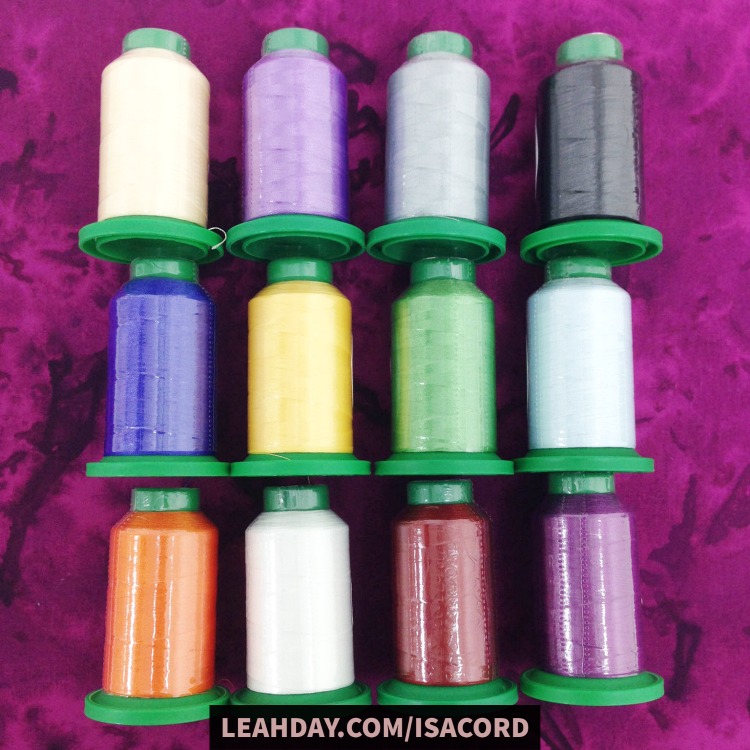12 Years Machine Quilting with Isacord!
I recently counted up the years and was surprised to find I’ve been machine quilting with Isacord for over 12 years. Learn why I’ve been stuck on this thread for so long in this new video:
Click Here to learn more about Isacord Thread. This is a 40 weight, polyester embroidery thread that is absolutely awesome at machine quilting and machine embroidery.
Yes, Polyester Thread is Great for Machine Quilting
I love quilting with Isacord because it’s thin, but very strong so it doesn’t break easily. It’s also more affordable at around $6 for a 1000 meter spool.
I’ve also found this thread resists aging. I store my spools in this IKEA cabinet and many of my spools are 7-8 years old. So far I haven’t noticed this older thread getting more brittle or prone to breaking.
This is a common issue with other thread brands and can be a real problem when it comes to investing in lots of spools and lots of colors. The primary reason why I haven’t played the field and tried other thread types is because I have so many spools of Isacord and see no reason to change the thread I’m using.
But Why Not Quilt with Cotton Thread?
But the most frequent question I’m asked is – Is it really okay to use polyester thread for quilting?
It continues to surprise me how limited some quilters are with their thread choices. Many still believe we can only use cotton thread, and that any other material is downright dangerous for our quilts.
Dangerous. Seriously?
This is downright silly, especially considering this can be the difference between enjoying machine quilting or hating it due to endless tedious thread breaks.
I personally found cotton thread too weak and often too thick to handle the high speed and friction of machine quilting. As soon as I needed to travel stitch or build up thread in a decorative way, my thread would snap or shred.
There’s only so many thread breaks a girl can stand before she just gives up quilting with weak cotton thread!
Do You Piece with Isacord Thread?
Short answer – no. Unless I’m feeling really really lazy and don’t want to bother rethreading my machine, I don’t piece my quilts with Isacord thread.
Isacord is slippery. It tends to unravel unless properly secured and for this reason I don’t feel comfortable using it for chain piecing or especially strip piecing.
But Isacord is terrific for machine quilting, machine embroidery, and machine appliqué! It’s my favorite thread for everything except quilt piecing and sewing.
So yep, after twelve years I’m still super happy with Isacord thread. So happy I see no reason to mix this up, no reason to play the field, no reason to experiment with other machine quilting threads. Because ultimately it makes the most sense to me to stick with what works!
Click Here to check out Isacord Thread. We offer both individual spools (white is my favorite) and a collection of twelve spools here.
Let’s go quilt,
Leah Day


What size needle do you use in long arm? And do you wind your own bobbins? I’ve had a hard time winding Isacord bobbins for long arm quilting. ThaNKS CAROL
I like size 18 needles for my Qnique 21. Yes, I always wind bobbins from the spool I’m using on the top. Here’s a video on winding bobbins on a longarm – https://freemotionproject.com/2019/06/how-to-wind-a-bobbin-on-a-grace-qnique-longarm.html
Hi Leah, you made me ask the question: what thread do you use for piecing?
Thanks.
Hi Beth, Leah prefers Aurifil cotton thread for piecing: “I also piece with thin thread. My favorite is Aurifil 50 weight Mako cotton which is super thin, but very strong. It’s very annoying to use thread that’s so thin it keeps breaking, but I find it’s the perfect balance with Aurifil 50 wt.”
I like Aurifil 50 weight Mako Cotton for piecing.
Hi Leah –
I love your work and you are a fantastic teacher. I have one of your books and have watched some of your Craftsy classes.
Regarding Isacord, I am having trouble quilting with it. I’m using a 90/14 topstitch needle. The upper thread is breaking periodically, even though I’ve adjusted the upper thread tension. I am also using the thread in the bobbin. Any suggestions?